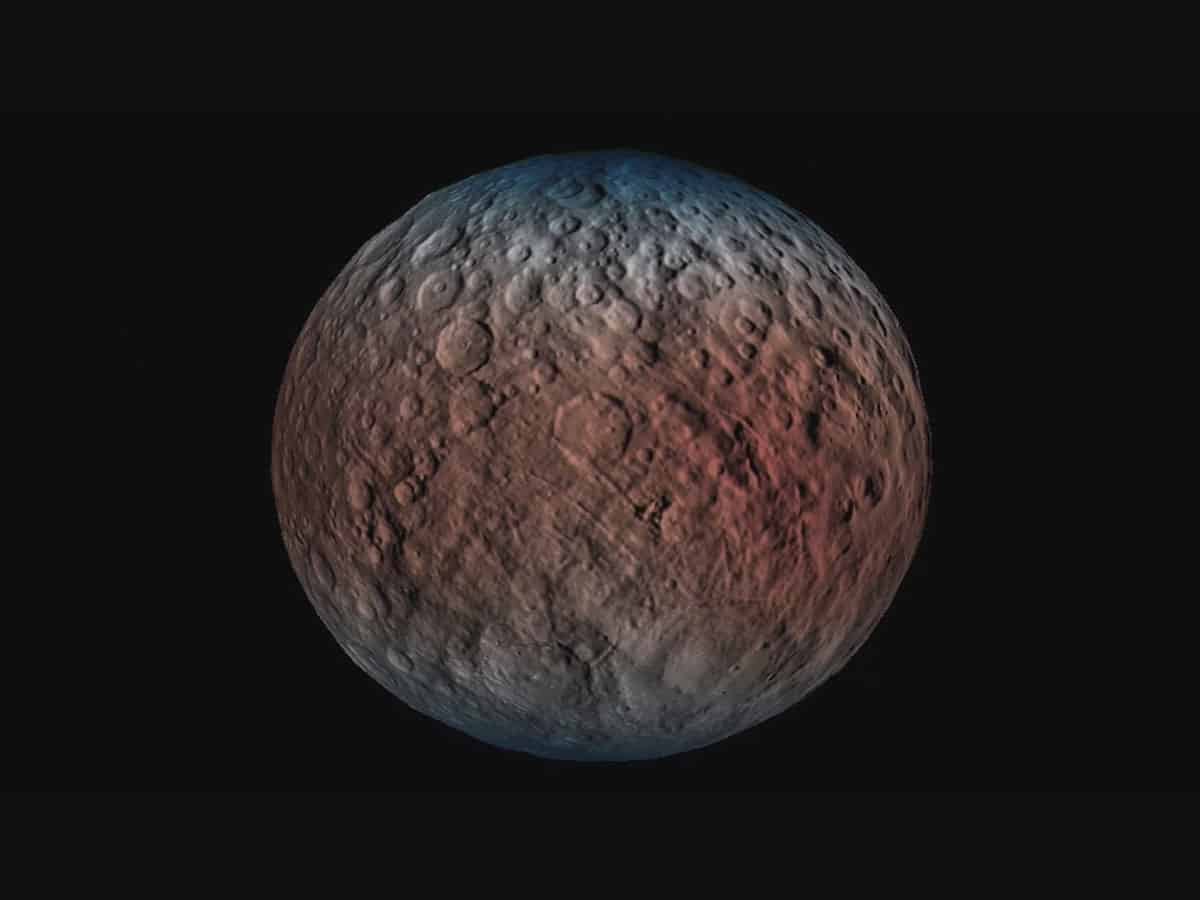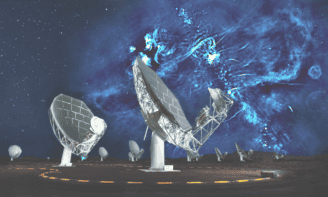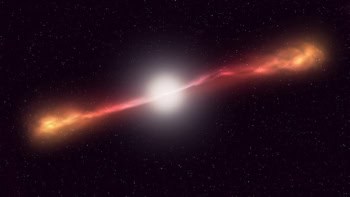The race to the riches of asteroids is on, with several private companies vying for funding to become the first space miners. Andrew Glester digs into the issues involved in making money from asteroids
“I’ll make a prediction right now. The first trillionaire will be made in space.”
So said Texas senator Ted Cruz, shortly after a bill was signed to increase NASA’s budget for 2018. To untrained ears, his claim would have sounded extraordinary. It might even have stretched credulity for those familiar with the challenges of space. But on closer inspection, Cruz was not being that revolutionary. Peter Diamandis – founder of the X Prize competition to encourage tech developments – made the same prediction back in 2008 and expanded on the theme in his 2015 book Bold. As for how those trillionaires will make their riches from space, both he and Neil DeGrasse Tyson – the US astrophysicist and TV host – reckon it will be done by mining asteroids.
Progress is already under way. The first asteroid company, Planetary Resources, was founded in 2012 by Diamandis, Chris Lewicki and others in Washington. Within a year the US company Deep Space Industries was set up by Rick Tumlinson, Stephen Cover and a host of others. A handful more firms have since been established, and while some are admittedly are less serious than others, the race to the riches of space is on.

Despite the existence of such firms and Cruz’s declaration, however, Donald Trump’s 2018 NASA budget cancelled the Asteroid Redirect Mission (ARM), which planned to bring an asteroid into an orbit around Earth where it could be studied and mined a lot more easily than one in the asteroid belt. A NASA spokesperson told me the ARM team is ensuring that the key knowledge from the mission so far is not lost, but NASA pulling out has left the asteroid-mining community without a valuable learning tool and places asteroid mining firmly in the realm of the private space sector.
Nevertheless, the investment bank Goldman Sachs has reassured its clients about the financial benefits of investing in asteroid-mining companies. “The psychological barrier to mining asteroids is high, the actual financial and technological barriers are far lower,” it said in a report published last year. A Caltech study put the cost of an asteroid-mining mission at $2.6bn – perhaps not surprisingly the same estimated cost of NASA’s erstwhile ARM. It might sound a lot, but a rare-earth-metal mine has comparable set-up costs of up to $1bn and a football-field-sized asteroid could contain as much as $50bn of platinum.
There are, however, potentially major challenges for anyone wanting to mine such an asteroid. How do you get it back to Earth through the atmosphere and land it without destroying the planet? Who do you sell it to in space if you can’t get it back to Earth? And even if you can bring it to Earth, all of a sudden platinum is no longer rare. Given that common metals aren’t as expensive as rare metals, will mining an asteroid really be worth it?
Metals and water
Scientists have studied asteroids using ground-based telescopes and space missions – such as NASA’s Galileo and Dawn crafts – which together have gathered close-up imagery and data. Perhaps the most important data came from Japan’s Hayabusa, which in 2010 became the first spacecraft to have landed on an asteroid and successfully returned home with samples. These studies have revealed that there are two types of asteroids of interest to the mining community.
The first are achondrites, which are rich in platinum group metals (ruthenium, rhodium, palladium, osmium, iridium and platinum). These precious metals gravitate to the cores of planets as they form, meaning that they are very deep down on Earth. In the turbulent early solar system, however, some burgeoning planets were smashed to pieces in collisions and became some of the achondrite asteroids that may provide a treasure trove for today’s space miners.
The other asteroids of interest are chondrites. They are perhaps the more immediately valuable, being rich in water. Astronauts need this vital resource not only as a drink and to hydrate food, but also because it is a very efficient radiation shield. Water will be precious for the Moon bases and hotels promised by today’s space entrepreneurs such as Elon Musk (founder of SpaceX) and Jeff Bezos (founder of Blue Origin).

But water is heavy and therefore expensive to launch out of the Earth’s atmosphere. Indeed, it costs between $9000 and $43,000 to send a water bottle into space – which is why it is all recycled on the International Space Station. However, Hubble images of the largest known asteroid, Ceres, suggest that it could hold more water than our planet. Smaller asteroids hold lots too and a technique known as optical mining would use the heat from the Sun to bake the water out of the rock.
The elements of water can also be used for rocket fuel. Asteroid miners are already planning to split the water from chondrites into hydrogen and oxygen, which would serve as fuel and oxidizer respectively. They are hoping to set up fuel stations in low-Earth orbit and the asteroid belt so that spacecraft can fill up on their way to the outer planets of the solar system. Currently, around 90% of the weight of modern rockets is taken up with fuel, so if you can carry less fuel on take-off because you can fill up off-Earth, space flight becomes much cheaper.
Within our reach
But how many asteroids are potential mining hotspots? Martin Elvis, a Harvard University astrophysicist with an interest in asteroid mining, developed an equation in 2013 to estimate the number of asteroids that might be potential mining candidates with our current technology. The equation accounts for the number of asteroids within reach of today’s rocket ships, the likelihood of them being worth mining, whether it is practically feasible to mine them, and whether they would yield a profit. When he first ran the numbers back in 2013, Elvis estimated that around 10 potentially metal-rich asteroids, and 18 sufficiently water-rich, lie within our grasp.
SpaceX’s development of increasingly powerful rockets has bolstered the hopes of asteroid miners because it means we can travel further into space. But Elvis told me that recent press reports claiming he thought the successful Falcon Heavy launch on 6 February had burst open the sky to potential asteroids were wide of the mark. “I made the remark at a conference in Texas recently and the press missed off the word ‘might’, but the truth is that I haven’t run the numbers yet. We need more data before I can run the numbers again, but a wild guess might be that this new fleet of heavy rockets could increase the numbers by a factor of 10.”
Elvis was not just referring to Falcon Heavy either. Blue Origin’s New Glen rocket and, in the longer term, the New Armstrong rocket can all be added to the mix when Elvis next runs his equation. Yet even though the SpaceX rockets are boosting the hopes of asteroid miners who could one day provide his explorers with fuel and raw materials, Musk does not seem convinced. In fact, in 2003 he called asteroid mining “bogus” and, at least publicly, has not updated that view.
Amara Graps, an astrophysicist who organizes the bi-annual Asteroid Science Intersections with In-Space Mine Engineering Conference (ASIME) and founded the Latvian initiative Baltics in Space, is more optimistic. “Elon will come around. He’s a clever guy and he’s surrounded by clever people. He’ll get there but I don’t know how to reach him to sell it to him.” Half the delegates at the most recent ASIME conference, which took place in Luxembourg in April, came from asteroid-mining companies, with the rest being asteroid scientists. Indeed, Graps believes the interface between scientists and business people is essential. The asteroid scientists’ role is to provide scientific support to the companies; addressing some of the companies’ largest asteroid science questions.
Need riches to get rich
Asteroid companies have one major cash-flow issue: if there are riches in space, the miners are reliant on faithful funders to get them there in the first place. That’s why Graps believes communication is key. “Everyone is struggling in their own way,” she says. “So it helps if we can talk to each other. And share. And use our own resources more efficiently.”
Before any company reaches an asteroid, they’ll have to fill that gap in their finances with other revenue streams. The business model for asteroid-mining companies is therefore currently much more Earth-bound. Planetary Resources, for example, which uses its expertise for mining here on Earth, is still reliant on wealthy bankers. Indeed, after missing a funding milestone last year, the company laid off many of its 70 employees. Asteroid-mining companies need to convince potential funders that the claims of untold riches in space are believable and achievable.
But rather than just targeting wealthy investors, Mitch Hunter-Scullion, chief executive of the UK-based Asteroid Mining Corporation, has taken a different tack. He’s turned to crowdfunding for his first asteroid-prospecting mission, which he hopes to fire into space in 2020. “We’re launching APS-1 [Asteroid Prospecting Satellite 1] from India, because it is orders of magnitude cheaper than elsewhere,” he says. “We’re aiming to raise £2.6m through crowdfunding, which, in space terms, is not too overwhelming.” That may be true, but £2.6m will still require a lot of backing from the public for what, to many people, seems like a distant dream. If they do manage to raise the funds, he then plans to sell the data they own to raise more revenue.
Rocket for rocketeers
A boost for public interest might not be too far away. Although NASA’s Asteroid Redirect Mission has been cancelled, its OSIRIS-Rex sample-return mission to asteroid 101955 Bennu left Earth in September 2016, before Trump took office. It will reach Bennu in December this year and then return a sample to Earth in 2023. Asteroid miners will be watching closely, just as they did when Rosetta landed on 67P/Churyumov–Gerasimenko…and then bounced along its surface.
“We knew a lot about the composition of the comet but that was still a surprise,” Graps tells me. “We need more science before we land on an asteroid to mine it. You don’t want to be bouncing off.”
Graps believes that the asteroid-mining community was distracted by the wrong thing to begin with. “I think [they] wasted time focusing on the metal-rich asteroids,” she says. Her view is shared by Planetary Resources, which puts the platinum-rich asteroids in its second wave of targets. They believe you’re better off targeting chondrites as they have water, which will be your revenue stream in the near future. You mine the water, you own the rocket fuel stations in low-Earth orbit, on the Moon and on the way to deep space. Whether it will make anyone a trillionaire is another question, however. You can use the heat of the Sun to bake the water out of the asteroid but you then need to stop it sublimating off into space. None of this is particularly cheap and you need the spacecraft to come along relatively frequently to keep your revenue streams buoyant. As Elvis says, “In space, no-one can hear you sell.”
How to be a trillionaire
Legally, nobody can own an asteroid, but the US Space Act of 2015 allows companies to own the materials they mine from bodies in space. Luxembourg passed similar laws last year and Hunter-Scullion tells me he is lobbying the UK government to follow suit. Graps is hopeful Latvia will join the party too. In fact, the country that gets the laws right might just win the most lucrative business in space. After all, if your space-mining company is making billions of pounds in space, the money will, for the foreseeable future, be spent on Earth.
There are fabulously wealthy and intelligent people who claim that they will become trillionaires from asteroid mining. Personally, I find it easier to imagine the tidal wave as their asteroid splashes down into the ocean, and the price of platinum dropping through the floor as it becomes suddenly and abundantly available. A future where the metals, rock and water that we mine in space are used in space feels more achievable. Whether that happens soon enough to make the investors of today rich is, I imagine, their big gamble. Elvis for one is convinced that asteroid mining will take place in our lifetime and gave me a top tip on how to become a space millionaire. “It’s relatively easy,” he says. “You just start with a billion.”




